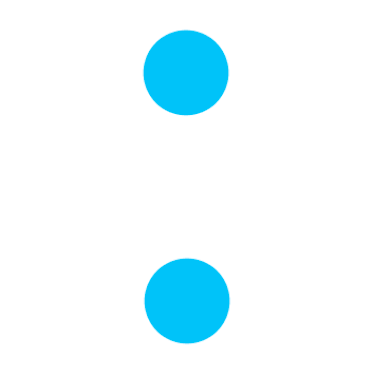MODULE - 1 Est. Duration: 57 min
MODULE - 2 Est. Duration: 48 min
MODULE - 3 Est. Duration: 1 hr 9 min
MODULE - 4 Est. Duration: 41 min
MODULE - 5 Est. Duration: 42 min
MODULE - 6 Est. Duration: 23 min
MODULE - 7 Est. Duration: 56 min
MODULE - 8 Est. Duration: 25 min
MODULE - 9 Est. Duration: 17 min
MODULE - 10 Est. Duration: 24 min
Unit 9 .1
CHANGED FORMS - 'daal' & 're'
Est. Duration: 7 Minutes
Bookmark This
INTRODUCTION
We’ve seen that letters of the 'daal' and 're' groups are non-connectors and do not change shape when connecting with other letters.
There is, however, an important exception to this rule. And this exception can be summarized as follows:
Letters of the 'daal' and 're' groups do not change shape in their
initial positions.They do not change shape in their
medial or final positions either whenpreceded by a non-connector .They do change shape when preceded by a connector, such as letters from the 'be' and 'jiim' groups and such.
9.1.1: ‘daal’ & be Group
Consider the following comparison between the words “baad” (बाद), meaning "air" and “bad” (बद), meaning "bad":
- bad
- बद
- baad
- बाद
Above: Observe the change in shape of the letter ‘daal’ in the word “bad”
In both the words shown above, the letter ‘daal’ is in the final position. However, in the word “baad” it is preceded by ‘alif’ which is a non-connector and hence, does not change shape.
On the other hand, in the word “bad” the ‘daal’ is preceded by ‘be’ which is a connector and therefore, the ‘daal’ undergoes a shape change as shown below:
- daal
- दाल
- daal
- दाल
Above: Observe the change in shape of the letter ‘daal’ in the word “bad”
Let’s take another example and let’s look at the words “aabaad” (आबाद) meaning "inhabited" and “abad” (अबद), meaning "eternity":
- abad
- अबद
- aabaad
- आबाद
Above: Observe the change in shape of the letter ‘daal’ in the word “abad”
9.1.2: ‘daal’ & jiim Group
In a similar fashion, consider the following comparison between the words “rad” (रद) and “had” (हद):
- had
- हद
- rad
- रद
Above: Observe the change in shape of the letter ‘daal’ in the words “rad” and “had”
Again, in the word “had” the ‘daal’ is preceded by ‘he’ which is a connector and therefore, the ‘daal’ undergoes a shape change.
9.1.3: ‘re’ & be Group
Once again, let’s look at a comparison between the words “Dar” (अर) and “par” (बर):
- par
- पर
- Dar
- डर
Above: Comparing the change in shape of the letter ‘re’ in the words “Dar” and “par”
In both the words shown above, the letter ‘re’ is in the final position. However, in the word “Dar” it is preceded by ‘alif’ which is a non-connector and hence, does not change shape.
On the other hand, in the word “par” the ‘re’ is preceded by ‘pe’ which is a connector and therefore, the ‘re’ undergoes a shape change as shown below:
- re
- रे
- re
- रे
Above: Observing the change in shape of the letter ‘re’ in the words “Dar” and “par”
Let’s take another example and let’s look at the words “baar” (बार) and “uja.D” (उजड़):
- uja.D
- उजड़
- baar
- बार
Above: Comparing the change in shape of the letter ‘re’ in the words “baar” and “uja.D”
9.1.4: ‘re’ & jiim Group
And yet again, following in a similar fashion, let’s look at a comparison between the words “a.D” (अड़) and “ja.D” (जड़):
- ja.D
- जड़
- a.D
- अड़
Above: Comparing the change in shape of the letter ‘re’ in the words “a.D” and “ja.D”
Here again, in the word “ja.D”, the ‘.De’ is preceded by ‘jiim’ which is a connector and therefore, the ‘.De’ undergoes a shape change.
Let’s take another example and let’s look at the words “KHaar” (ख़ार) and “KHabar” (ख़बर):
- KHabar
- ख़बर
- KHaar
- ख़ार
Above: Comparing the change in shape of the letter ‘re’ in the words “KHabar” and “KHaar”
Great! With this, we’ve covered the shape change that 'daal' and 're' group letters undergo in their medial and final positions.
9.1.5: Some more words
bad
बद
- badan
- बदन
- bad
- बद
- KHaandaan
- ख़ानदान
- nidaa
- निदा
- had
- हद
- judaa
- जुदा
- KHudaa
- ख़ुदा
- anDaa
- अंडा
- ajdaad
- अज्दाद
- DanDaa
- डंडा
- TinDaa
- टिंडा
- pinDaa
- पिंडा
- chandan
- चंदन
- paaband
- पाबंद
- abjad
- अबजद
- pad
- पद
So let’s move on to the next page to learn about 'jazm' in detail and learn some new words that utilize it.





.png)


